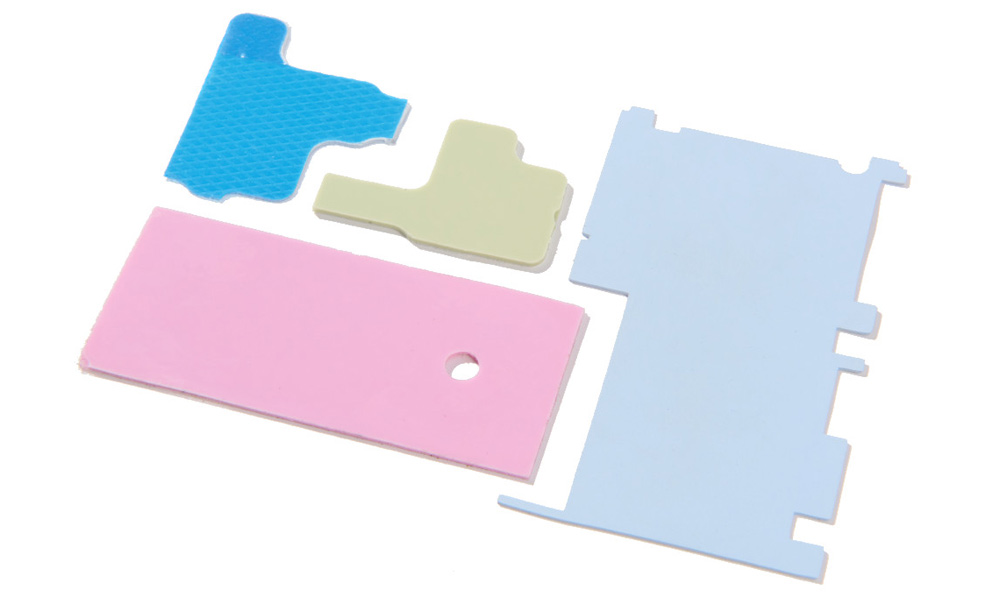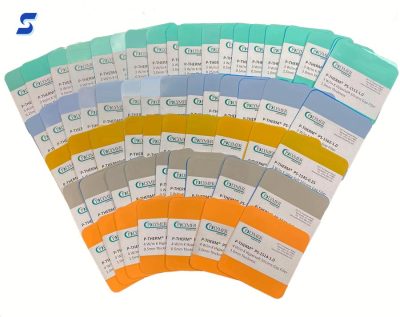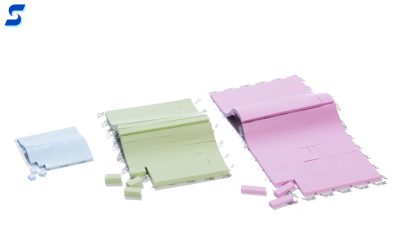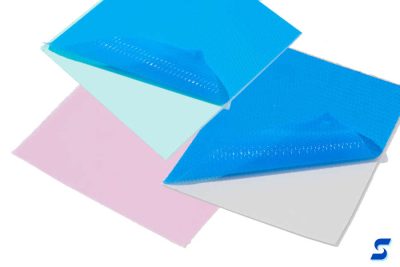Material
Thermal Interface Materials
Engineered silicone elastomers capable of conducting heat efficiently to extend the service life of sensitive electronics
Engineered silicone elastomers capable of conducting heat efficiently to extend the service life of sensitive electronics

Visit the Thermally Conductive Materials Data Sheets page for detailed technical information on these materials.
Visit the Thermal Gap Filler Pads page for information on the thermal gap pads manufactured by Stockwell Elastomerics using these thermal interface materials.
Stockwell Elastomerics sources thermal interface materials from three primary sources, the leading manufacturers for these products:
All three manufacturers produce a family of thermal pad materials with various physical properties such as thickness, thermal conductivity, dielectric strength, availability of coated fabric surface on one side and hardness (Shore 00). Stockwell Elastomerics’ Applications Engineers are adept at working with customers to select the best material for the specific application.
 Polymer Science offers a variety of thermally conductive gap filler pad materials designed to achieve desired heat management properties, including some semi-low compression set gap fillers and some ultra-soft gap fillers. Polymer Science manufactures P-THERM® Silicone Gap Fillers in continuous lengths that are 18″ wide. The P-THERM materials include the PS-2505 (5.0 W/m-K) gap filler, PS-1543 (3.0 W/m-K), and PS-1541 (1.0 W/m-K) gap fillers, among others. The 18″ wide continuous length allows for many options in cutting techniques and good material yield. Polymer Science P-THERM® gap fillers are made in the USA, offering a robust supply chain.
Polymer Science offers a variety of thermally conductive gap filler pad materials designed to achieve desired heat management properties, including some semi-low compression set gap fillers and some ultra-soft gap fillers. Polymer Science manufactures P-THERM® Silicone Gap Fillers in continuous lengths that are 18″ wide. The P-THERM materials include the PS-2505 (5.0 W/m-K) gap filler, PS-1543 (3.0 W/m-K), and PS-1541 (1.0 W/m-K) gap fillers, among others. The 18″ wide continuous length allows for many options in cutting techniques and good material yield. Polymer Science P-THERM® gap fillers are made in the USA, offering a robust supply chain.Stockwell Elastomerics can also apply thermally conductive adhesives (or other stronger adhesives) for thermal pad installation. In addition to gap fillers, these suppliers make thermally conductive silicone coated fabrics, thermally conductive tapes, and thermally conductive solid silicone materials. Some thermal gap filler materials are supported with a thermal fabric or thermal film.
TIMs are installed between heat-producing devices such as integrated circuits (ICs) and heat-dissipating devices such as metal heat sinks. PCBs and PCB components have uneven surfaces, however, so thermal interface materials need to be conformable so that they fill the tiny air gaps between heat-generating and heat-dissipating components. Otherwise, air trapped between a heat-producing device and a heat sink inhibits the effective transfer of heat away from hot spots to the exterior of a closed system. Air has a significantly higher thermal resistance than TIMs, which also have a higher thermal conductivity than air.
 Thermal Conductivity and Air Gaps
Thermal Conductivity and Air GapsThermal conductivity, a measure of heat transfer, is a key TIM specification that is expressed in Watts per meter Kelvin (W/m•K). Although thermal interface materials have a much higher thermal conductivity than air, they have a significantly lower thermal conductivity than the metals that are used for heat sinks. Solid metals won’t conform to uneven surfaces, however, and they’re not compressible like thermal interface materials. Thermal conductivity is dependent upon compressed thickness, and thermal interface sheet materials come in a range of thicknesses.
By providing a comformable thermal path between a heat source and a heat sink, TIMs support effective thermal management systems that include heat sinks and fans. Yet, high thermal conductivity alone is an incomplete basis for TIM selection. Interfacial thickness, the contact surfaces, and the pressure applied between a heat-generating component and heat sink are also factors to consider. In general, however, thinner gap fillers are used to improve the efficiency of finned heat sinks and thicker gap fillers are used to conduct heat to chassis or enclosures.
TIMs are not the only thermally conductive materials used by the electronics industry, but they’re an easy-to-apply alternative to messy thermal greases and thermal pastes. The thermally conductive materials that Stockwell Elastomerics fabricates include thermal gap fillers, a category of products that are also known as thermal pads, gap pads, gap filler pads, and by proprietary names such as Gap Pad®. Most of the gap fillers that Stockwell Elastomerics fabricates are sheets of very soft or ultra-soft silicones with a dough-like consistency; however, thermally conductive silicone sponge can also be used for gap pads.
 Very Soft Silicones for Thermal Gap Filler Pads
Very Soft Silicones for Thermal Gap Filler PadsThermal gap filler pads are made from a silicone polymer that is filled with ceramic particles. Normally, polymers are not good conductors of heat; however, the addition of ceramic particles (such as aluminum oxide) produces compounds with higher amounts of thermal conductivity. Depending on the specific thermal interface material that Stockwell Elastomerics fabricates for gap pads, thermal conductivity can range from 1.0 to 5.0 W/m-K.
Most of the thermal pads that Stockwell Elastomerics cuts from sheet materials are made of silicone with a gel-like modulus. Unlike a cured silicone rubber, this material is very soft and compliant. Generally, thermal gap fillers are intended to be compressed only once, when PCB components are installed. Therefore, they do not rebound well. However, thermally conductive silicone sponge (see next section below) rebounds after being compressed and can be recompressed many times. Silicone gap fillers from Stockwell Elastomerics can be provided in a variety of manufactured configurations. Parts can be cut into intricate shapes using waterjet cutting technology, provided kiss-cut onto card stock backing, or in sheet or roll stock format.
Stockwell Elastomerics also fabricates thermal management products from NORSEAL® (formerly COHRlastic®) R10404M green heat-conductive rubber. This cured thermal interface material is a closed cell silicone sponge and differs from other thermal gap fillers because it rebounds after being compressed and can be recompressed many times.
NORSEAL R10404M is five times more thermally conductive than standard silicone sponge. Another thermally conductive silicone sponge material, R10404, is also available but has a lower thermal conductivity than R10404M. Applications for R10404 include heat press pads, thermal pads for heat sinks, gaskets and cushioning pads.
R10404M thermally conductive silicone rubber is available in thicknesses that range from 0.32″ to 0.188″. Continuous rolls are 36″ wide. Sheets are 36″ x 36″ with a .250″ thickness. Stockwell Elastomerics can apply thermally conductive adhesives (or other stronger adhesives) to these materials and supply customers with sheets or die cut or water jet cut parts.
The video below is a visual representation of how thermal gap fillers work. A TC-3008 thermal pad is applied to bottom of one beaker while the other is place directly onto a heat source. The thermal gap filler conforms to the irregularities between the surface which eliminates air pockets and creates a thermal bridge; this in turn allows more energy to transfer to the water. The beaker with the gap filler boils more quickly than the beaker without the pad. (Note: This video is a visual example and not the intended use for thermal gap fillers.)
Contact Us for further assistance with silicone thermal interface materials (TIMs) and thermally conductive pads and gap fillers.